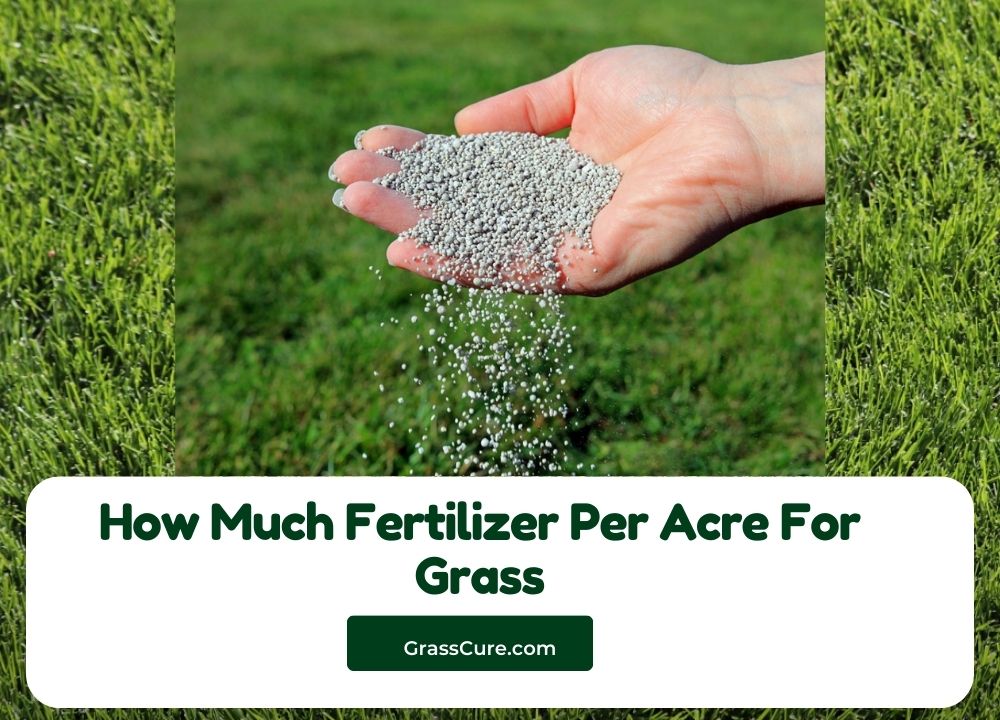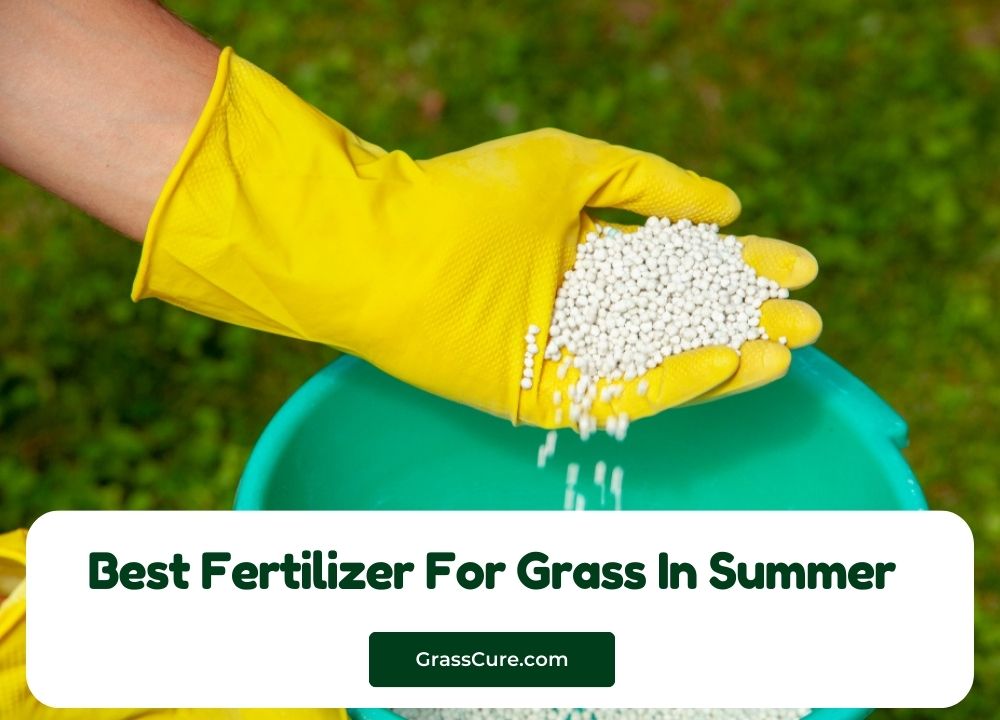Fertilizing grass is a crucial aspect of maintaining a lush, vibrant lawn or healthy pasture. Whether you’re a homeowner looking to enhance your yard’s curb appeal or a farmer aiming to optimize forage growth, understanding the right amount of fertilizer to apply can significantly impact the health and appearance of your grass.
Fertilizers provide essential nutrients that promote robust growth, improve color, and increase resilience against pests and diseases. However, applying the correct amount of fertilizer is key; too little can lead to weak, sparse growth, while too much can harm the grass and the environment.
In this guide, we will explore how much fertilizer to use per acre for different types of grass. By considering factors such as grass type, soil conditions, and growth requirements, you’ll be equipped with the knowledge to ensure your grass thrives all year round. Let’s delve into the world of grass fertilization and discover how to create the green, healthy space you desire.
Contents
Understanding Grass Types
Before determining how much fertilizer to apply, it’s essential to understand the type of grass you’re working with. Grass varieties can be broadly categorized into cool-season and warm-season grasses, each with unique characteristics and nutritional needs. Knowing your grass type will help you tailor your fertilization approach for optimal growth.
Cool-Season Grasses
Cool-season grasses thrive in the northern regions and are most active during the cooler months of spring and fall. They generally prefer temperatures between 60°F and 75°F. Some common cool-season grass varieties include:
- Kentucky Bluegrass: Known for its rich color and dense growth, Kentucky bluegrass establishes deep roots, making it drought-resistant once established. It requires regular fertilization to maintain its lush appearance.
- Perennial Ryegrass: This grass type germinates quickly and is often used for quick patches and overseeding. It benefits from a balanced fertilization schedule to support its rapid growth.
- Tall Fescue: Recognized for its adaptability and tolerance to heat and drought, tall fescue has a deep root system and requires specific nutrient levels for optimal performance.
Cool-season grasses typically need more nitrogen in the spring and fall to support their growth cycles.
Warm-Season Grasses
Warm-season grasses flourish in the southern regions and are most active during the hotter months of summer. They prefer temperatures between 80°F and 95°F. Common warm-season grass varieties include:
- Bermuda Grass: This popular choice for lawns and sports fields is known for its durability and ability to withstand heavy foot traffic. Bermuda grass requires regular fertilization to maintain its green color and vigorous growth.
- Zoysia Grass: A dense, carpet-like grass, zoysia is ideal for lawns and golf courses. It grows well in various soil types but benefits from a tailored fertilization approach to support its slower growth in cooler months.
- Buffalo Grass: This drought-tolerant grass is perfect for low-maintenance lawns and is best suited for regions with hot summers. Fertilization needs are typically lower compared to other warm-season grasses.
Warm-season grasses usually require higher levels of nitrogen during the active growing season, particularly in late spring and early summer.
Importance of Knowing Your Grass Type
Understanding whether you have cool-season or warm-season grass is vital for determining your fertilization needs. Each grass type has different nutrient requirements, growth patterns, and optimal fertilization times. By identifying your grass type, you can ensure that you provide the right nutrients at the right time, leading to healthier grass and a more beautiful lawn or pasture.
Types of Fertilizers
When it comes to fertilizing grass, selecting the right type of fertilizer is crucial for achieving optimal growth and health. Different fertilizers have unique compositions, advantages, and drawbacks, which can impact how effectively they meet the nutritional needs of your grass. Below are the primary types of fertilizers to consider:
Synthetic Fertilizers
Synthetic fertilizers are chemically manufactured products designed to provide essential nutrients to plants in readily available forms. They often contain a specific ratio of nitrogen (N), phosphorus (P), and potassium (K), commonly referred to as the N-P-K ratio.
- Advantages:
- Fast-acting: Synthetic fertilizers can quickly deliver nutrients to grass, promoting rapid growth.
- Precise nutrient control: The specific N-P-K ratios allow for targeted nutrient application based on soil tests and grass needs.
- Ease of application: Many synthetic fertilizers come in granular or liquid forms, making them easy to spread or spray.
- Disadvantages:
- Risk of over-fertilization: Due to their concentrated nature, there’s a higher risk of applying too much, which can lead to grass burn and environmental pollution.
- Soil health concerns: Over-reliance on synthetic fertilizers may disrupt soil microbial activity and degrade soil health over time.
Organic Fertilizers
Organic fertilizers are derived from natural sources such as plants, animals, and minerals. They often release nutrients more slowly, improving soil structure and enhancing microbial activity.
- Advantages:
- Soil health improvement: Organic fertilizers enhance soil fertility and promote a healthy ecosystem by enriching the soil with organic matter.
- Reduced risk of runoff: The slow-release nature of organic fertilizers minimizes the risk of nutrient runoff into water bodies, reducing environmental impact.
- Sustainability: Many organic fertilizers are made from renewable resources, making them an environmentally friendly choice.
- Disadvantages:
- Slower nutrient release: Organic fertilizers take longer to break down and may not provide immediate results, requiring more frequent applications for specific growth needs.
- Variable nutrient content: The nutrient levels in organic fertilizers can vary widely, making it necessary to conduct soil tests and monitor grass health closely.
Slow-Release vs. Fast-Release Fertilizers
Fertilizers can also be categorized based on their release rates, influencing how and when nutrients are made available to grass:
- Slow-Release Fertilizers: These fertilizers gradually release nutrients over an extended period, reducing the need for frequent applications and minimizing the risk of leaching. They’re ideal for maintaining consistent nutrient levels in grass throughout the growing season.
- Fast-Release Fertilizers: These products provide immediate access to nutrients, making them suitable for addressing specific nutrient deficiencies or stimulating rapid growth. However, they require more frequent applications and can lead to nutrient runoff if not applied carefully.
Choosing the right type of fertilizer is essential for the health and vitality of your grass. By understanding the differences between synthetic and organic fertilizers, as well as their release rates, you can make informed decisions that align with your grass type, soil conditions, and environmental considerations.
Calculating Fertilizer Needs
Properly calculating the amount of fertilizer needed for your grass is crucial to ensure optimal growth and health. Over-fertilizing can lead to negative consequences, such as nutrient runoff and grass burn, while under-fertilizing may result in weak and unhealthy grass. This section will guide you through the essential steps to accurately determine your fertilizer needs.
Soil Testing
Soil testing is the first step in understanding your lawn’s nutrient requirements. By assessing the nutrient levels and pH of your soil, you can tailor your fertilizer application to meet the specific needs of your grass.
- Importance of Testing: Regular soil tests (every 2-3 years) help identify nutrient deficiencies, pH imbalances, and organic matter levels, providing valuable insights into how much fertilizer is necessary.
- How to Test: Soil testing kits are available at garden centers or online. Alternatively, you can send samples to a local agricultural extension office for professional analysis.
- Interpreting Results: Your soil test results will typically include recommendations for N-P-K ratios and application rates based on your specific grass type and soil conditions.
General Fertilizer Recommendations
Once you have your soil test results, you can use them to determine the appropriate amount of fertilizer to apply. Here are general recommendations for common grass types:
- Cool-Season Grasses:
- Kentucky Bluegrass: Apply 3-4 pounds of nitrogen per acre per year, split into two or three applications (early spring and fall).
- Perennial Ryegrass: Use 4-5 pounds of nitrogen per acre per year, with applications in early spring and late summer.
- Tall Fescue: Apply 3-5 pounds of nitrogen per acre annually, with a focus on late spring and early fall.
- Warm-Season Grasses:
- Bermuda Grass: Use 4-6 pounds of nitrogen per acre per year, with applications starting in late spring and continuing through summer.
- Zoysia Grass: Apply 3-4 pounds of nitrogen per acre annually, with a focus on late spring and early summer.
- Buffalo Grass: Typically requires 2-3 pounds of nitrogen per acre per year, applied in late spring.
Adjustments Based on Conditions
While these general recommendations provide a solid starting point, it’s essential to adjust your fertilizer applications based on specific conditions such as:
- Soil Quality: Poor-quality soil may require additional amendments, while healthy, nutrient-rich soil may need less fertilizer.
- Climate: Changes in weather patterns, such as extended droughts or heavy rainfall, can affect nutrient availability and grass growth, necessitating adjustments to your fertilization plan.
- Intended Use of Grass: If your grass is subject to heavy traffic (e.g., sports fields), it may require more frequent fertilization compared to grass used solely for aesthetic purposes.
Accurately calculating fertilizer needs is vital for promoting the health and vigor of your grass. By conducting regular soil tests, following general fertilizer recommendations, and making necessary adjustments based on specific conditions, you can ensure your lawn or pasture receives the nutrients it needs to thrive.
Application Techniques
Applying fertilizer correctly is just as important as choosing the right type and amount. The method of application can significantly influence how effectively your grass absorbs nutrients. In this section, we’ll explore the best practices for timing, application methods, and safety precautions to ensure your fertilizer works as intended.
Timing
The timing of fertilizer applications is crucial for maximizing nutrient uptake and promoting healthy grass growth. Here are some key points to consider:
- Cool-Season Grasses:
- Early Spring: Apply fertilizer when soil temperatures reach around 55°F to kickstart growth after dormancy.
- Late Summer to Early Fall: A second application is beneficial for maintaining vigor and preparing the grass for winter.
- Warm-Season Grasses:
- Late Spring: Fertilize when soil temperatures consistently reach 65°F, signaling the start of the growing season.
- Mid-Summer: A second application in mid-summer can help maintain lush growth and color during peak heat.
Methods of Application
Choosing the right method for applying fertilizer can enhance its effectiveness and reduce waste. Here are the most common application techniques:
- Broadcasting:
- This method involves spreading granular fertilizer evenly across the lawn using a broadcast spreader. It’s ideal for covering large areas quickly and ensures even distribution.
- Liquid Application:
- Liquid fertilizers can be sprayed directly onto the grass using a sprayer or hose-end attachment. This method provides immediate nutrient availability and is particularly effective for quick fixes or specific nutrient deficiencies.
- Top Dressing:
- Top dressing involves applying a thin layer of organic matter or compost to the soil surface. While it doesn’t deliver concentrated nutrients like fertilizers, it improves soil structure and supports long-term grass health.
- Incorporation:
- For some fertilizers, especially those that are slow-release, incorporation into the soil through aeration or light tilling can enhance nutrient absorption.
Safety Precautions
While applying fertilizer, it’s important to take safety precautions to protect yourself, your grass, and the environment:
- Wear Protective Gear: Use gloves, goggles, and a mask to avoid contact with skin and inhalation of dust or chemicals.
- Follow Instructions: Always read and follow the manufacturer’s instructions for the specific fertilizer you’re using, including application rates and timing.
- Avoid Overlapping: To prevent over-fertilization, avoid overlapping areas during application, especially when using a spreader.
- Watering: After application, lightly water the area to help activate the fertilizer and prevent runoff. However, avoid heavy watering immediately after application to minimize nutrient leaching.
- Environmental Considerations: Be mindful of surrounding plants, water bodies, and soil erosion. Avoid applying fertilizer before heavy rains to reduce the risk of runoff and pollution.
Using the right application techniques ensures that your grass receives the nutrients it needs while minimizing environmental impact. By timing your applications correctly, selecting appropriate methods, and following safety precautions, you can promote healthy growth and a vibrant lawn or pasture.
Monitoring and Adjusting
Once you have applied fertilizer to your grass, the next critical step is monitoring its health and adjusting your fertilization practices as needed. Regular observation and assessment will help you determine the effectiveness of your fertilization strategy and make informed decisions for future applications. This section outlines how to monitor grass health and adjust your approach accordingly.
Signs of Over-Fertilization
Over-fertilization can lead to various problems, affecting both grass health and the environment. Look out for these signs:
- Grass Burn: If the grass edges appear brown or yellow and the blades are dry and crispy, it may be a sign of fertilizer burn due to excessive nitrogen levels.
- Excessive Growth: Rapid, lush growth followed by wilting or collapsing can indicate that too much fertilizer has been applied. Grass may grow tall but lack strength in its structure.
- Nitrogen Leaching: If you notice a white or light-green hue in your grass, it may suggest that the nitrogen has leached out of the root zone, leading to nutrient deficiencies.
- Weed Growth: An increase in weeds may signal that the grass is stressed or unhealthy due to over-fertilization, allowing weeds to thrive in the nutrient-rich environment.
Adjusting Future Applications
Based on your observations, you may need to adjust your fertilization practices. Here’s how:
- Evaluate Soil Health: Conduct regular soil tests to check nutrient levels and pH. This will help you understand the specific needs of your grass and prevent over- or under-fertilization.
- Modify Application Rates: If you notice signs of over-fertilization, reduce the amount of fertilizer you apply in future applications. Conversely, if grass health appears poor, consider increasing the application rate slightly, but only after conducting a soil test to confirm nutrient deficiencies.
- Change Timing of Applications: Adjust your fertilization schedule based on the growth patterns of your grass. For example, if you notice that your cool-season grass is not thriving in early spring, you may need to adjust the timing of your first application.
- Experiment with Fertilizer Types: If certain fertilizers aren’t yielding the desired results, try different types (e.g., switching from synthetic to organic or adjusting the release rate) to find what works best for your grass.
Regular Monitoring Practices
Establishing a routine for monitoring grass health can help you catch issues early. Consider the following practices:
- Visual Inspections: Regularly check your lawn or pasture for color, texture, and density. Healthy grass should be vibrant green, dense, and resilient.
- Observe Growth Patterns: Take note of growth rates and patterns throughout the growing season. If growth appears uneven or sluggish, it may be time to reassess your fertilization plan.
- Document Changes: Keep a record of fertilizer applications, soil test results, and grass health observations. This will provide valuable insights for future decisions and adjustments.
Monitoring and adjusting your fertilization practices is essential for maintaining healthy grass and achieving the desired results. By being vigilant about signs of over-fertilization, making necessary adjustments, and regularly monitoring your grass, you can create a thriving lawn or pasture that meets your aesthetic and functional needs.
Conclusion
Proper fertilization is a cornerstone of healthy grass growth, whether you’re maintaining a lush lawn or cultivating a productive pasture. By understanding your grass type, selecting the right fertilizer, calculating your needs accurately, applying it effectively, and continuously monitoring results, you can create an environment that fosters vibrant, resilient grass.
Remember, the journey to a thriving lawn or pasture doesn’t end with a single application. Regular soil testing, observation of grass health, and adjustments based on performance will empower you to optimize your fertilization strategy over time. This proactive approach not only enhances the appearance and health of your grass but also contributes to environmental sustainability.
Investing time and effort into understanding the specific needs of your grass will yield beautiful results, transforming your outdoor space into a green oasis. We hope this guide has equipped you with the knowledge to make informed decisions about fertilization. If you have any questions or experiences to share, please feel free to leave a comment below. Happy gardening!






